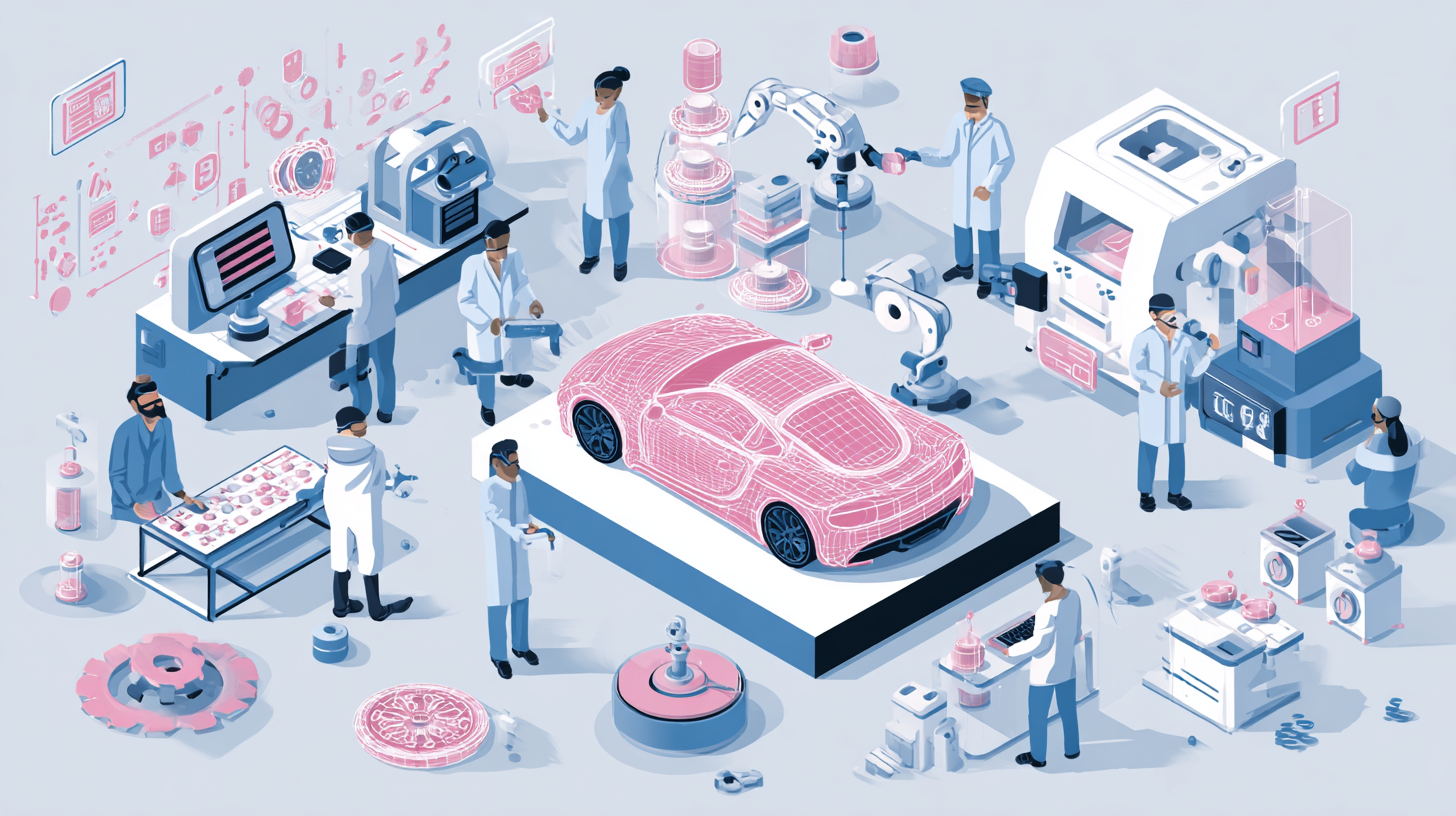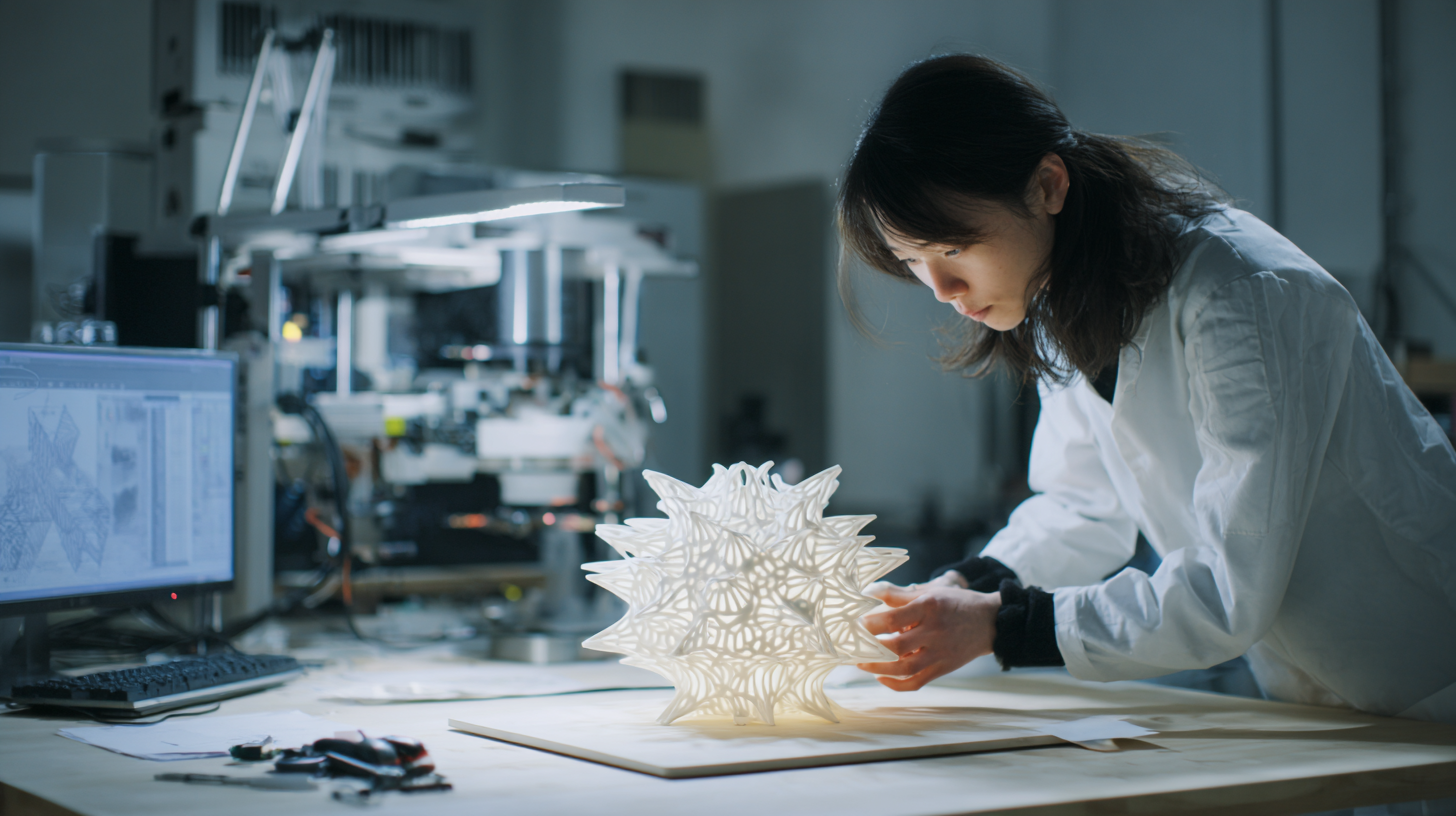
AI in Research and Development: Transforming Rapid Prototyping with AI-Generated Design
Artificial Intelligence (AI) is no longer a futuristic concept confined to the pages of science fiction. It’s here and shaping the way industries operate, especially in research and development (R&D). Today, we’re diving into how AI is revolutionizing rapid prototyping and design generation, allowing you to bring your innovative ideas to life quicker and more efficiently than ever before. Let’s explore the fascinating world of AI-generated designs and the profound impact they’re having in various fields, and you’ll soon understand the crucial role AI plays in your work.
Understanding the Need for Rapid Prototyping
With the accelerated pace of technological advancements, the traditional model of product development often falls short. Long timelines and inflexible processes can stifle creativity and deter innovation. Rapid prototyping emerges as a crucial solution, enabling you to quickly create and iterate your design ideas, bringing them from the drawing board to reality.
The essence of rapid prototyping lies in its ability to expedite the design process, allowing for faster testing and feedback cycles. You can construct models based on initial sketches or concepts, test them, and make adjustments efficiently. This means mistakes can be caught earlier in the process, saving time and resources in the long run. Companies across industries, from automotive to healthcare, are increasingly adopting rapid prototyping methodologies, empowered by AI to enhance their effectiveness.

How AI is Shaping Rapid Prototyping
AI is making waves in R&D by streamlining various processes and enhancing the quality of prototypes you can generate. By integrating machine learning algorithms and generative design software, you now have the ability to not only create but also optimize your designs. Through analyzing data from past projects, AI algorithms can identify key trends and design parameters that lead to successful outcomes.
This intelligent approach enables faster iterations. Instead of relying solely on human intuition, AI analyzes vast datasets and recommends design modifications that you might not have considered. Imagine being able to input your design requirements, and almost instantly receiving multiple optimized design options that adhere to your criteria. This possibility is what makes AI a game-changer in rapid prototyping.
AI-Generated Design: The New Frontier
One of the most exciting advancements in the realm of AI is generative design. This process takes into account not just the aesthetics of a product, but also its functionality, material properties, and real-world applications. By leveraging AI, you can input specific parameters—such as size, weight, and strength—and let the software generate various design alternatives for you.
Generative design tools can explore millions of possibilities in a matter of seconds, identifying the best combinations based on the data provided. This newfound capability transforms how you approach design, encouraging creativity while ensuring practical feasibility. Instead of discarding ideas after initial sketches, you can now use AI to refine and elevate these concepts, resulting in a more inventive and rigorous final product.

Benefits of AI in Design and Prototyping
The integration of AI into design and prototyping processes comes with a plethora of benefits that can significantly enhance your workflow. Here are a few key advantages you’ll likely encounter:
Accelerated Time to Market
AI does not just speed up the design process—it fundamentally transforms it. By automating routine tasks and generating design options quickly, you can bring products to market in a fraction of the time it traditionally takes. This is particularly vital in highly competitive sectors where being first can provide a significant advantage.
Improved Product Quality
With AI’s ability to analyze vast amounts of data and identify optimal design parameters, you’re likely to see improvements in product quality. By leveraging generative design, you can create refined prototypes that achieve higher performance standards. This ensures your final product is not only innovative but also reliable.
Cost Efficiency
Fat costs often accompany long development cycles due to wasted resources and time. However, rapid prototyping powered by AI helps to minimize these issues. By identifying potential issues early in the design process and reducing the number of iterations required, you can save both time and money, making your R&D efforts more cost-effective.
Enhanced Collaboration
AI tools often come with features that facilitate better communication and collaboration among team members. By providing a common platform where designs can be shared, modified, and discussed in real-time, AI enhances teamwork, ensuring that everyone is on the same page as you work toward developing your prototype.
The Challenges of Embracing AI in R&D
Even though AI brings a wealth of opportunities, integrating this technology into your workflows isn’t without its challenges. Recognizing these hurdles can prepare you for a smoother transition into the world of AI-generated design.

Skill Gaps
Implementing AI in your prototyping processes may require specialized technical skills that your team might not possess yet. This knowledge gap can hinder the adoption of AI technology and limit your ability to maximize its benefits. Investing in training programs or hiring new talent can be essential to overcoming this challenge.
Ethical Concerns
As with any technology, AI raises ethical considerations. You’ll need to think carefully about how you’re using generative design and ensure that your AI systems operate in an ethical manner. Issues such as data privacy, the potential for bias in algorithms, and transparency in decision-making should be central to your strategy.
Regulatory Compliance
As AI technologies evolve, so do the governance frameworks that surround them. Being aware of regulatory requirements in your industry is crucial. Ensure that your use of AI for rapid prototyping adheres to both local and global regulations to avoid potential legal pitfalls.
Practical Applications of AI in Rapid Prototyping
AI’s capability to enhance rapid prototyping is being harnessed across diverse sectors. Let’s explore some practical applications that illustrate the power of AI-generated design.
Manufacturing
In manufacturing, AI-driven generative design tools optimize the design and production processes. They help identify materials best suited for specific applications, reducing waste and improving sustainability in your designs. Whether you’re developing parts for aerospace or consumer products, AI can streamline the entire workflow, from ideation to production.
Healthcare
AI is revolutionizing healthcare product design, from medical devices to tailored treatment solutions. By using AI-generated prototypes, healthcare professionals can quickly design and refine products that meet stringent safety and efficacy standards, improving patient outcomes. Rapid prototyping allows for innovative designs that can be tested and validated more rapidly than traditional methods.
Automotive
The automotive industry has embraced AI in rapid prototyping to design everything from interior layouts to complex engine components. Generative design enables engineers to explore new materials and manufacturing techniques, enhancing vehicle performance while maintaining passenger comfort. The result is quicker development cycles and innovative vehicle designs that meet ever-evolving consumer expectations.
Consumer Electronics
In the competitive field of consumer electronics, companies leverage AI to create cutting-edge prototypes that stand out in the market. With AI tools, designers can create intricate product architectures and aesthetic features that attract consumers’ attention. Rapid prototyping allows for quick iterations and updates based on consumer feedback, ensuring that products are aligned with market trends.
Future Trends in AI and Prototyping
As AI technology continues to evolve, so will its impact on rapid prototyping. Staying ahead of emerging trends will be vital for you to maintain a competitive edge. Here are some trends to keep an eye on:
Increased Customization
AI’s ability to analyze user data and preferences is paving the way for hyper-personalized products. You can expect rapid prototyping to facilitate customized designs that cater to individual needs, whether in fashion, tech, or automotive. This level of personalization can significantly enhance consumer satisfaction and brand loyalty.
Virtual and Augmented Reality
The integration of AI with virtual reality (VR) and augmented reality (AR) tools will further enhance rapid prototyping. Imagine being able to visualize your designs in a virtual space before they’re built. This will allow for more effective collaboration and feedback processes, as stakeholders can interact with and evaluate prototypes in an immersive environment.
Blockchain and AI
Blockchain technology will likely intersect with AI to provide improved transparency and traceability in product development. It can ensure that design data remains secure and easily accessible, facilitating better collaboration among teams and stakeholders.
Making the Transition to AI in Your R&D Processes
Ready to integrate AI into your rapid prototyping efforts? Transitioning to AI-enhanced design requires a thoughtful approach. Start by assessing your current processes and identifying areas that could benefit from AI integration. Here are some steps to consider in your journey:
-
Evaluate AI Tools: Research and evaluate various AI tools that align with your prototyping needs. The right tools should seamlessly integrate with your existing workflows and provide the functionalities required for your projects.
-
Invest in Training: Equip your team with the skills necessary to harness AI effectively. Offer training programs that focus on AI applications in design, data analysis, and ethical considerations.
-
Start Small: It’s wise to start with pilot projects that allow you to test AI capabilities without fully committing. Assess the outcomes and gradually scale your AI integration based on the results.
-
Encourage a Culture of Innovation: Cultivate a company culture that embraces innovation and encourages experimentation. Empower your team to explore AI-driven design solutions and learn from both successes and failures.
-
Monitor Regulatory Developments: Stay informed about evolving regulations and industry standards surrounding AI deployment. This vigilance will ensure that your efforts remain compliant and ethically sound.
Conclusion
The integration of AI in rapid prototyping is transforming the research and development landscape. By streamlining processes, improving quality, and facilitating innovation, AI helps you bring your ideas to life faster than ever before. While challenges exist, understanding how to leverage AI effectively while considering ethical implications is crucial in this new frontier.
With the ongoing evolution of technology, embracing these changes will keep you at the forefront of your industry. So dive in, explore the potential of AI-generated design, and unlock new levels of creativity and efficiency in your prototyping processes.
If you enjoyed this article, consider giving it a clap, leaving a comment, and subscribing to my Medium newsletter for more updates on AI and innovation in research and development! Your feedback is invaluable, and together, we can explore the exciting possibilities that lie ahead.
